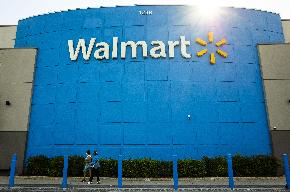Ghost kitchens and pop-up concepts are surging in popularity. Prior to the pandemic, restaurants were considered one of the most Internet resilient retail segments, but many have been devastated by the pandemic. Ghost kitchens in many ways serve as the omni-channel component for restaurants, allowing customers to order and receive food online, and they are helping to generate revenue for restaurants today.
“All restaurants right now are really looking at the concept of pop-ups and ghost kitchens because they are taking advantage of the proliferation of the delivery services, whether they start their own delivery service or [use another delivery service.] A lot of existing restaurants are struggling, and as a means to expand their gross sales, they are using ghost kitchens and pop-up concepts. It is booming,” Andrea Gendel, co-chair of the leasing practice at Pryor Cashman LLP, tells GlobeSt.com.
There are two major types of ghost kitchen lease structures. A ghost kitchen is either managed by a single operator or by a ghost kitchen manager that licenses the space out to other users. The latter is akin to WeWork in the office space, according to Gendel. Before inking a lease with a ghost kitchen, landlords need to understand the model and operations. “Ghost kitchens tend to lend themselves to warehouse-type space that is not in a main retail corridor. We are seeing that change a little bit, but landlords need to understand the operation before doing a deal with a tenant,” she says. In addition, landlords should understand the build-outs and permits needed to convert the space.
Ghost kitchen concepts aren’t new, but they have evolved. “Restaurants have always had these concepts in play where there are certain things that they would cook offsite,” says Gendel. “Now, with the pandemic, ghost kitchens aren’t behind-the-scenes concepts anymore. They are now front-facing to the public but they are purely online and they are selling direct to the consumer.”
Landlords have also warmed to these concepts, and many are willing to lease storefront space to alternative users, like ghost kitchens. “Landlords used to not want to see these concepts, but that is softening. If you are a landlord with a mortgage and you need an income stream, to the extent that you can get some user in there, even if it isn’t ideal, you are going to allow it to come into your building,” says Gendel.
With landlords open to these concepts and more customers wanting to take advantage of delivery services, ghost kitchens are likely here to stay. “I think ghost kitchens are going to be lasting for quite a while,” Gendel adds. “Everyone sees how cost-effective they are for getting a concept off of the ground before investing in a brick-and-mortar location, particularly for new restaurant concepts. Even if it fades to some degree in the next five years—and no one can predict that—I don’t think the concept of a ghost kitchen will ever go away.”

















 Copyright © 2024 ALM Global, LLC. All Rights Reserved.
Copyright © 2024 ALM Global, LLC. All Rights Reserved.